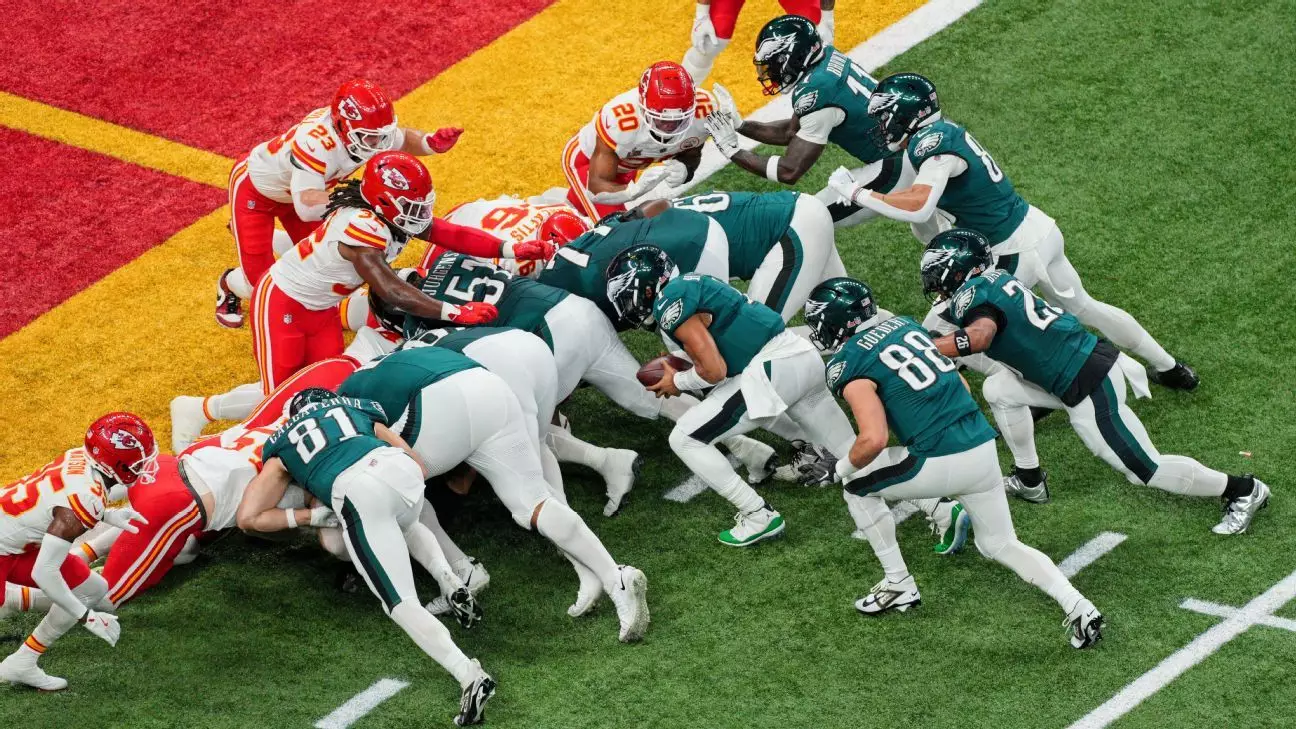In the ever-evolving landscape of the NFL, strategy and tactics are paramount for success. Recently, the league has found itself at a crossroads concerning a particular play—known informally as the “tush push.” As teams vie for a competitive edge, the proposal to ban this quarterback sneak has sparked renewed discussions among coaches, players, and league officials. Taking a closer look at the implications of such a rule change can shape not only team strategies but also the overall essence of the game.
The “tush push” is a controversial yet effective tactic primarily employed by teams like the Philadelphia Eagles and the Buffalo Bills. This play entails a quarterback positioning himself under center, often accompanied by teammates who help propel him past the line of scrimmage. In recent seasons, these two teams have executed the play with extraordinary success, achieving a remarkable 87% success rate in either scoring touchdowns or converting first downs. This statistic sharply contrasts with the league-wide average of 71%, raising questions about the play’s fairness and its impact on game strategy.
The play first garnered attention due to its sheer effectiveness, but it has also entered the realm of strategic discussion. Critics assert that the increasing reliance on such plays diminishes the traditional artistry of football, turning it into a brute force contest rather than a test of tactical brilliance.
NFL owners are influential players in the decision-making process related to rule changes. The prospect of banning the “tush push” arises from meetings involving NFL executives and the competition committee, where various teams propose rule adjustments. The unnamed team that submitted the proposal represents a coalition of voices seeking to level the playing field, pushing back against tactics that tilt the scales in favor of certain franchises.
The forthcoming vote requires a supermajority, with 24 of 32 owners needing to agree for the proposal to pass. This aspect underscores the complexities of governance within the NFL, where the interests of different teams often clash. Such dynamics can lead to creative tactics that few can replicate, which some may argue detracts from the competitive spirit of the league.
Interestingly, the NFL has a history of modifying rules in response to evolving player strategies. Just a year prior, discussions regarding other play execution—like the hip-drop tackle—were notable. At that time, the league focused entirely on refining player safety without addressing the implications of the “tush push.” Troy Vincent, the NFL’s executive vice president, acknowledged this juxtaposition, stating that the Eagles might have simply mastered the play to a degree that comes across as unfair.
Moreover, the notion that the league could potentially legislate against successful strategies may unintentionally disincentivize innovation and lower competitive standards. One must wonder whether such a move caters to those teams struggling to find their footing or whether it merely stifles creativity among the franchises thriving on tactical ingenuity.
As teams prepare for possible rule changes, the conversation around the “tush push” exposes deeper questions about the identity of the NFL. Will the potential banning of the play redefine how teams approach fourth-and-short situations moving forward? Will coaches and players need to pivot and reinvent their strategies to adapt to a league where rules are fluid based on the perceived inequities of certain plays?
Additionally, the decision to maintain or abolish the “tush push” might also influence how rookie quarterbacks develop their skills. Younger quarterbacks and their respective coaching staff will need to calibrate their expectations and refine their strategies depending on the rules dictating play execution.
The debate surrounding the “tush push” reveals the intricate balance of tradition and innovation within the NFL. As teams and coaches grapple over the potential implementation of a ban, the outcome will wield significant influence over future game strategies, player development, and ultimately, the essence of what makes the NFL thrilling to fans around the world. The unfolding narrative will illuminate how the league navigates the complexities of competitive advantage while remaining true to the heritage of the sport.

